
Behavioral health literacy: A new construct to improve outcomes among incarcerated individuals
Published:
| Author: Carrie Pettus, Stephanie Kennedy, Tanya Renn, Stephen Tripodi, Lauren Herod, Danielle Rudes, Faye Taxman
In the United States, nearly 13 million adults are incarcerated in prisons and jails annually with significant negative public health consequences. Incarcerated individuals have disproportionate rates of behavioral health disorders (BHDs); untreated BHD symptoms bring people into incarceration settings and are associated with re-arrest after release.
Category: Incarceration, Mental Health, Reentry, Substance Use
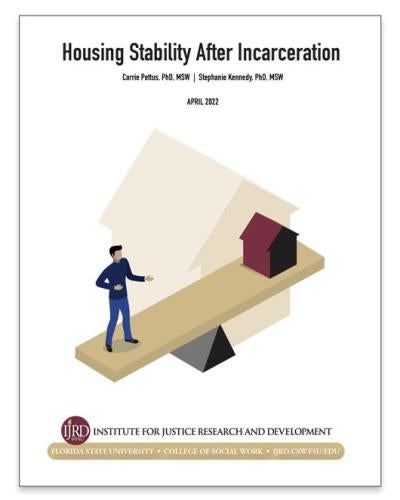
Housing Stability After Incarceration
Published:
| Author: Carrie Pettus, Stephanie Kennedy
This brief report examines changes in where and with whom individuals live, whether they consider themselves to be homeless, and whether they are paying rent or mortgage where they stay between leaving prison to 14-months post-release. These findings are situated within the broader context of reentry support, exploring the impact of both incarceration and reentry on families and the need to focus resources on those most in need.
Category: 5-Key Model for Reentry
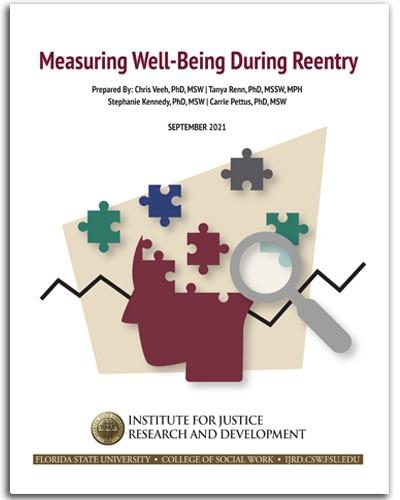
Measuring Well-Being During Reentry
Published:
| Author: Christopher Veeh, Tanya Renn, Stephanie Kennedy, Carrie Pettus
A growing number of scholars and reentry practitioners are seeking alternative approaches to identify how community stability and success can be measured for those returning home from incarceration to our communities. Our team developed a well-being-oriented conceptual framework – the Well-Being Development Model – and a manualized reentry program approach – the 5-Key Model for Reentry – which focus on human potential and thriving.
Category: 5-Key Model for Reentry, Well-Being

The Well-Being Development Model: A Theoretical Model to Improve Outcomes among Criminal Justice System–Involved Individuals
Published:
| Author: Carrie Pettus, Christopher Veeh, Tanya Renn, Stephanie Kennedy
This article proposes a new conceptual framework, the Well-Being Development Model (WBDM), to support the development, implementation, and assessment of innovative reentry interventions designed to increase well-being among the millions of individuals released from prisons and jails each year. In contrast to prominent models guiding reentry services, the WBDM increases incarcerated and formerly incarcerated individuals’ capacity to reach their full potential while addressing common problems and barriers to success.
Category: Well-Being, Reentry
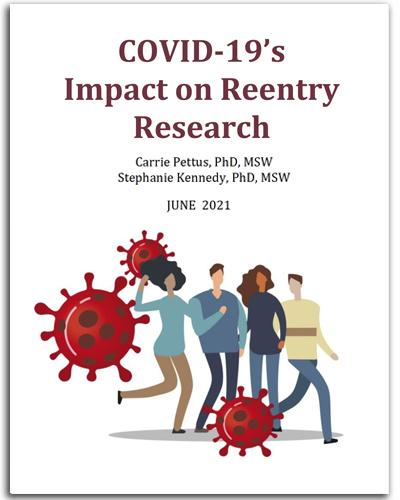
Brief Report: COVID-19's Impact on Reentry Research
Published:
| Author: Carrie Pettus, Stephanie Kennedy
When the pandemic began to impact communities across the United States in March 2020, most community members were concerned about how their lives would be affected. Researchers with ongoing studies were also concerned about how the pandemic would affect their ability to assess outcomes in their ongoing research.
Category: 5-Key Model for Reentry
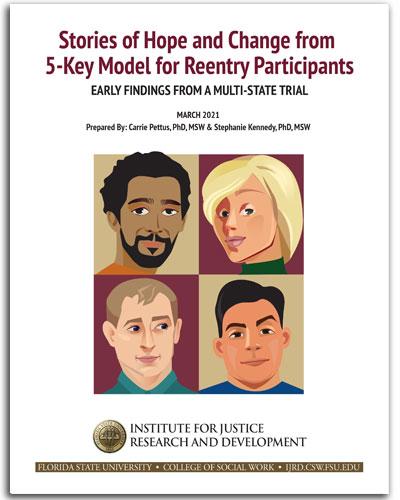
Stories of Hope and Change
Published:
| Author: Carrie Pettus, Stephanie Kennedy
This report presents interviews conducted with four 5-Key Model participants. Participants describe their lives and tell stories about overcoming challenges and finding success. They also describe how the 5 Keys helped them to make significant, positive changes to their lives and the ways 5-Key Model practitioners supported them in making these changes.
Category: 5-Key Model for Reentry

COVID-19, Incarceration, and Reentry
Published:
| Author: Carrie Pettus-Davis, Stephanie Kennedy, Faye Miller
This report presents data on the pandemic-related experiences of incarcerated individuals and individuals recently released from incarceration. Study participants report how they learned about the pandemic while incarcerated and identified the strategies both the facilities they were incarcerated in and they themselves as individuals took to prevent infection. They described stress, anxiety, fear, and worry as they reflected on their incarceration during the pandemic.
Category: 5-Key Model for Reentry, Well-Being, COVID-19

Trauma and Loss During Reentry
Published:
| Author: Carrie Pettus-Davis, Tanya Renn, Stephanie Kennedy
This report presents data about the extremely stressful life events experienced by study participants in the 8 months after they left incarceration and returned home. These stressful life events included losing a loved one to homicide, having been violently assaulted, witnessing violence and death in the home or community, finding out about the death or serious injury of a loved one, being diagnosed with a life-threatening illness, and losing critical resources like housing, employment, income, transportation, and social support.
Category: Reentry, Well-Being, 5-Key Model for Reentry

Going Back to Jail Without Committing a Crime
Published:
| Author: Carrie Pettus-Davis, Stephanie Kennedy
This report presents data on reasons other than criminal behavior that 5-Key Model study participants report they were re-arrested.
Category: Reentry, Well-Being, 5-Key Model for Reentry
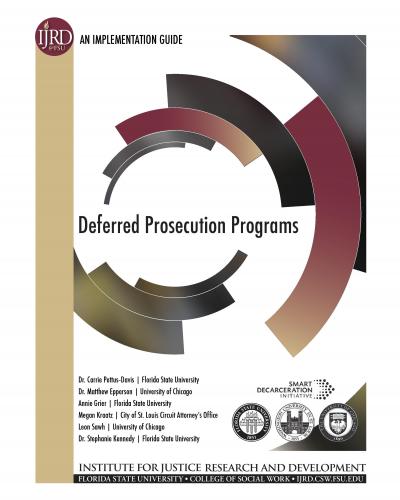
Deferred Prosecution Programs: An Implementation Guide
Published:
| Author: Carrie Pettus-Davis, Matthew Epperson, Annie Grier, Megan Kraatz, Leon Sawh, Stephanie Kennedy
Deferred prosecution is one prosecutor-led diversion mechanism that has the potential to reduce criminal justice involvement and incarceration rates while maximizing public safety.
Category: Smart Decarceration, Diversion, Deferred Prosecution

When Death Follows Release
Published:
| Author: Carrie Pettus-Davis, Stephanie Kennedy
This report highlights the reentry period - leaving incarceration and returning home - as the highest risk time for death in a formerly incarcerated individuals’ life. The purpose of this report is to explore the deaths that occur during the reentry period from several different vantage points.
Category: Reentry, Well-Being, 5-Key Model for Reentry
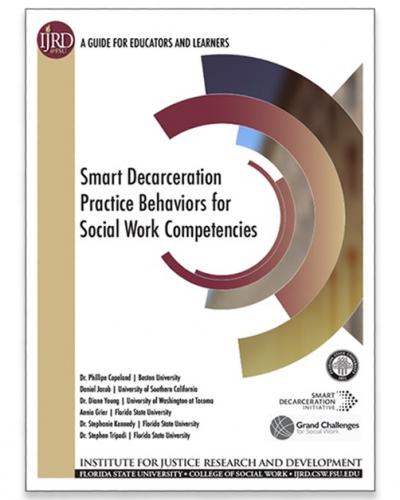
Smart Decarceration Practice Behaviors for Social Work Competencies
Published:
| Author: Phillipe Copeland, Daniel Jacob, Diane Young, Annie Grier, Stephanie Kennedy, Stephen Tripodi
This tool was conceived by a members of the “Promote Smart Decarceration” Grand Challenge Education Working Group to provide guidance for social work administrators, instructors, and students on how to effectively incorporate “smart decarceration” as a focus for social work education using the CSWE social work competencies.
This tool incorporates smart decarceration-related practice behaviors for ready application into both classroom curricula and field practicums.
Category: Grand Challenges, Smart Decarceration
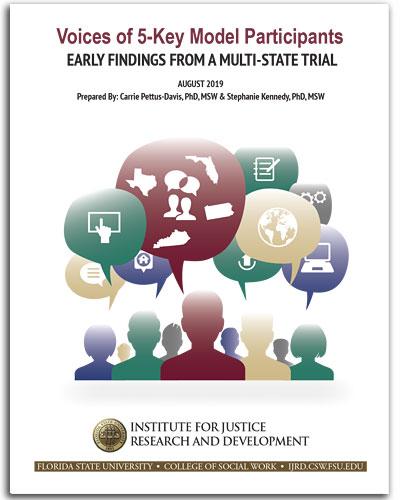
Voices of 5-Key Model Participants
Published:
| Author: Carrie Pettus-Davis, Stephanie Kennedy
This report contains interviews from four study participants involved in the 5-Key Model. The purpose of this report is to highlight the stories of participants in the 5-Key Model to provide a personal window into the experiences of those recently released from prisons. The interview explored participants’ lives and families, successes and challenges, and solicited advice for effectively helping individuals leaving incarceration.
Category: Reentry, Well-Being, 5-Key Model for Reentry

Pathways to Recidivism for women released from prison:A Mediated model
Published:
| Author: Stephen Tripodi, Carrie Pettus-Davis, Kimberly Bender, Michael Fitzgerald, Tanya Renn, Stephanie Kennedy
Findings showed no direct relationship between childhood trauma and reincarceration for women in the sample, although there was a significant mediated relationship from childhood trauma to depression to reincarceration. Results suggest the importance of addressing incarcerated women’s trauma before release, assessing for depression, and using empirically-supported interventions to treat depression when applicable.
Category: Incarcerated Women, Reentry

Accelerating Science Using the Research-to-Practice Feedback Loop
Published:
| Author: Carrie Pettus-Davis, Stephanie Kennedy
The report details the implementation of a Research-to-Practice Feedback Loop and how this Feedback Loop has been used to overcome challenges and adapt both the 5-Key Model intervention and how the intervention is delivered to individuals as they release from prison. The Feedback Loop provides space for practitioners, study participants, and researchers to identify areas for improvement and formalizes a process to ensure that any changes made are consistent with the original model, acceptable to all parties, and implemented fairly across all study sites.

